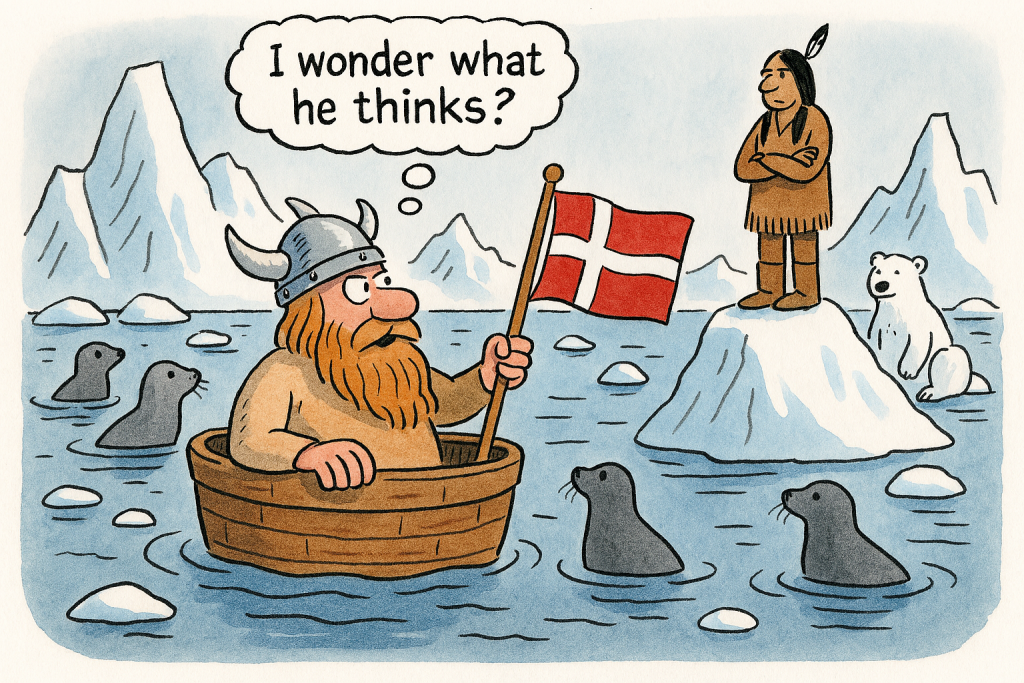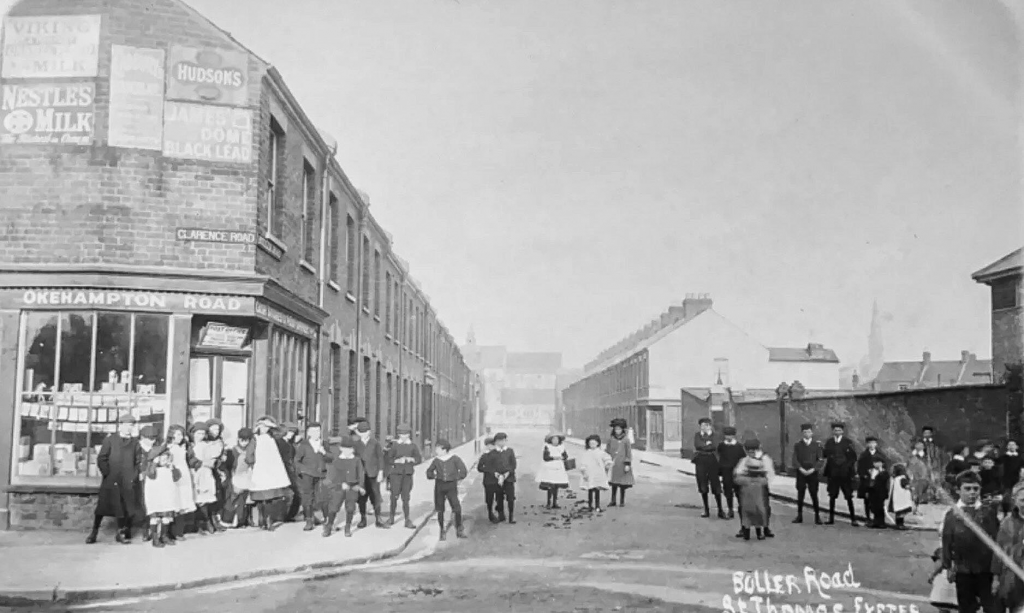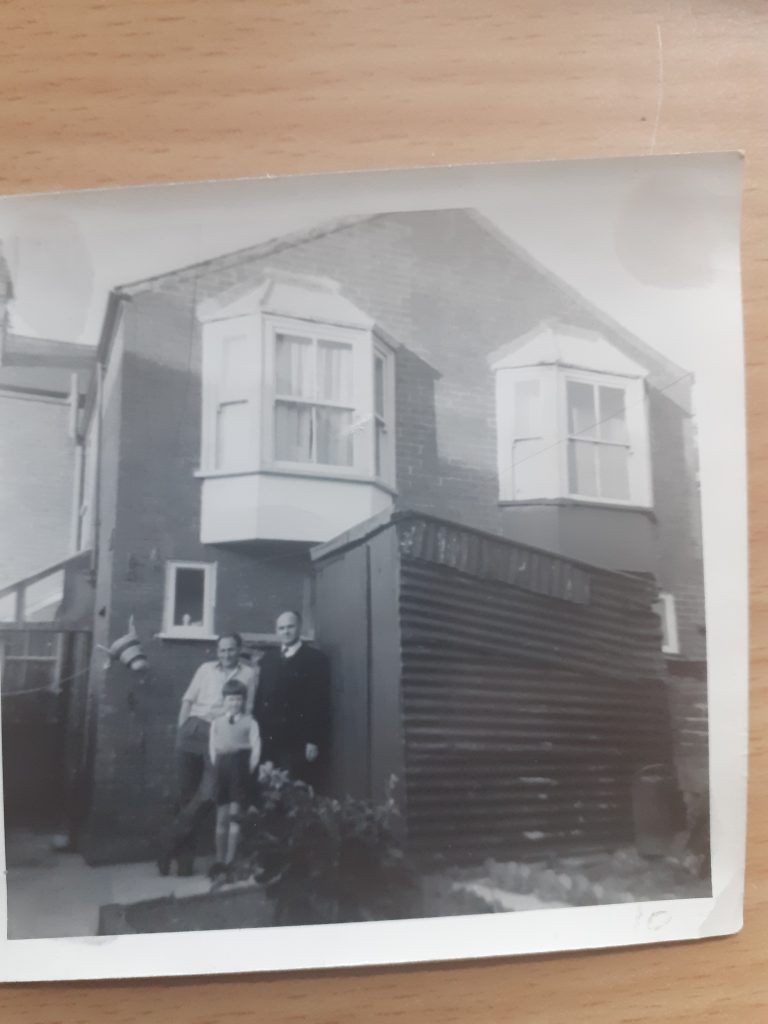Just Publish’d by T. Quillworthy, Bookseller at the Sign of the Flying Tub, in Paternoster Row
A Most Necessary Acquisition of Greenland — Now in its First Impression, with a Preface apologising for undue moderation, and Notes for the Satisfaction of the Curious. Price: Four Pence, or Six for those desirous of the Sheet with Marginal Illustrations of Tubs and Flying Alliances.
This Work, containing Observations of such Severity that no Gentleman of Wit may read it without a Smile, is humbly recommended to all Lovers of Truth, Enemies of Falsehood, and those who, having already purchas’d Greenland in Imagination, are desirous to know the full Measure of its Safety.
The Publisher certifies that the Work hath met with the approbation of several persons of extraordinary Gravity (or at least of their Servants), and may be read aloud in Drawing Rooms, Coffee-Houses, or Glass Ballrooms, with minimal Risk of Indignation — though such Risk is not wholly preventable.
Notice to the Curious: Second Edition Now Imminent
Due to the great Offence taken by certain Persons of Dignity, who may perhaps reside in the White House of Laputa, or thereabouts, a Second Edition is in Preparation. This Edition shall contain additional Remarks on the Obedience of Allies, an Appendix on Tubs and Boats of Five Hundred Years Past, and a Forewarning to all Nations that Objection shall be taken as Proof of Unreliability.
The Author, whose Moderation in the First Edition hath been much lamented by Admirers of Outrage, is compelled by Publick Demand to pursue the Work with the Full Vigour and Severity which so extraordinary a Subject justly warrants.
All Purchasers of the First Impression are entreated to retain it for Comparison, that they may observe how Justice and Satire, like Ice and Tubs, may float together, and how the State of Affairs, however absurd, is faithfully chronicl’d.
A MOST NECESSARY ACQUISITION OF GREENLAND
Humbly Propos’d for the Greater Security of All Alliances
Being an Examination of the Present Doctrine,
That Friendship is Best Preserv’d by Possession,
and Trust by the Removal of Those Trusted
By a Lover of Peace,
and Well-wisher to Order
“Covenants, without the Sword, are but Words.”
— Hobbes
Printed in the Year MDCCXXVI
For the Consideration of the Curious,
and Such as Are Willing to Be Convinced
The Author’s Apology to the Reader
The Author holds himself oblig’d, before entering upon the following Discourse, to beg the Reader’s Indulgence for the extraordinary Moderation he hath everywhere affected. He is sensible that many Passages might have been rendered more lively, and several Conclusions drawn with greater Force, had he permitted himself the Freedom of speaking plainly; but he was restrain’d by a tender Regard for those Gentlemen whose Feelings might suffer Injury from an unvarnish’d Representation of their own Reasoning.
He must further confess, with some Shame, that he hath omitted divers Observations of great Importance, not for want of Materials (which were plentiful), but from an Apprehension that the Publick, being already over-burthen’d with Clarity, could ill sustain an additional Load. The Author therefore contented himself with laying out the Argument in its mildest Dress, hoping that the Reader, by supplying the omitted Absurdities from his own Experience, might arrive at the fuller Truth with less Fatigue.
It will perhaps be objected that the Author hath treated Matters of high Policy with an Air too jocular for their Dignity. To this he answers, that when Reason is employ’d in Defence of Conclusions already determin’d, Gravity serves only to conceal the Jest. He thought it therefore an Act of Charity to preserve some Appearance of Earnestness, lest the Argument, expos’d nakedly, should provoke Laughter where Deference was intended.
Should any Person find himself aggriev’d by the Resemblance between the Principles here examin’d and those he hath publicly maintain’d, the Author assures him that such Likeness is entirely accidental. For it was never his Design to satirise any living Statesman; he hath only describ’d a certain Mode of Thinking, which appears, by great Misfortune, to be extremely popular at present.
Lastly, the Author entreats the Reader to consider that, had he follow’d the Example of some ancient Satirists, he might have propos’d Measures far more effectual, including the outright Purchase of Allies, the Leasing of Sovereignty by the Decade, or the Reduction of Treaties to Memoranda of Convenience. That he hath forborne such Improvements must be attributed, not to Want of Imagination, but to a lingering, and perhaps unfashionable, Respect for the Limits of Decency.
If, notwithstanding these Restraints, the Reader should discover any Sentiment offensive to common Sense, mutual Trust, or the Idea of Alliance itself, the Author begs that it be ascrib’d not to Malice, but to the Times — which have already outdone all Satire, and left the Writer little Credit but that of transcription.
**A Most Necessary Acquisition of Greenland, Humbly Explained.
With Authorities Cited for the Avoidance of Doubt**
It hath of late been pronounc’d, with great seriousness and a straight countenance, suitable to the weight of Empire, that the Island of Greenland must be annex’d, and that forthwith, for the better securing of its safety. Denmark, a Kingdom hitherto reckon’d among the Allies of the United States, and bound by Treaty, Oath, and Common Defence, is now discover’d to be unequal to the guardianship of its own dominions.
This discovery is the more remarkable, in that no Enemy Fleet darkens Greenland’s Seas, no Hostile Army encamps upon its Ice, nor any Foreign Power makes the least shew of Covetous Intent. The sole Disturbance presently observable proceeds, by a most fortunate Coincidence, from the very Power most eager to provide Relief.
We are advis’d, upon the Authority of several Persons of Gravity, that Treaties, though once esteem’d sacred, are in Truth but brittle Vessels, apt to founder when Interests shift; that Alliances are Conveniences rather than Obligations; and that true Security resides not in Cooperation, but in Possession. One must not content oneself with Hospitality, but prudently seize the Freehold, lest Friendship one day be mistaken for Independence.
This Doctrine, though novel in Application, is not without Precedent in Philosophy.
Mr Hobbes, that severe Examiner of Mankind, long ago instructed us that Trust is but Fear mislaid, and that Covenants, without the Sword, are but Words.¹ It would therefore be imprudent to rely upon Allies, unless one first deprive them of the Capacity to dissent.
Mr Grotius, likewise, hath much discours’d upon the Law of Nations; yet even he allow’d, in several Passages much esteem’d by the Learned, that Necessity is a Law unto itself — a Principle now happily extended to include all Circumstances in which a Powerful State desires the Property of a Smaller.²
It is further alledged that Greenland’s Title is of dubious Antiquity, having been first encounter’d by certain Persons who arrived, some five hundred Years past, in Boats — or, as one might more properly style them, Tubs — an Origin now judg’d sufficient to vitiate any present Claim to Sovereignty.
*This Observation is deliver’d with particular Confidence by those who govern a Nation founded entirely by Persons who likewise arriv’d in Tubs, Boats, and other Floating Expedients of the same Century.*³
Should Europe, startled by these Discoveries, express Unease or Objection, such Disquiet is immediately produc’d as Proof of Europe’s Unreliability; for, as a Learned Doctor of the Law hath lately observ’d, *“Nothing so betrays a want of fidelity as protest against dispossession.”*⁴ Thus Suspicion, having industriously manufactur’d its own Evidence, stands triumphantly confirm’d.
Denmark, meanwhile, is reproach’d for insufficient Zeal in Defence, even as the very Alliance sworn to its Defence is dismiss’d as inadequate. NATO, it seems, subsists only until it becomes inconvenient; at which point it is discover’d never to have subsisted at all.
Should any Person object that this Reasoning tends not to Security but to the Dissolution of all Alliances whatsoever, he may be answer’d thus: that Alliances are indeed most secure when they are no longer Alliances, but Possessions; and that Sovereignty is best respected when it is overridden with Confidence.
If this excellent Scheme be pursu’d with suitable Vigour, there will be no need to dismantle the Atlantic Alliance, for it shall expire quietly of Irrelevance. Greenland, in this most Rational Arrangement, is not the Prize, but the Proof — a small, icy Theatre upon which the Obsolescence of Mutual Trust may be convincingly perform’d.
I submit this Proposal with the utmost Humility, being confident it will greatly strengthen Friendships abroad, provided one understands Friendship to mean Obedience, and Security to mean Ownership.⁵
Authorities & Notes (For the Satisfaction of the Curious)
¹ Hobbes, Leviathan, Chap. XVII (or thereabouts): wherein it is made plain that Peace is best preserv’d when all Parties but one are rendered harmless.
² Grotius, De Jure Belli ac Pacis, variously cited when convenient, and silently neglected when not.
³ It is to be observ’d that Arrival by Boat is condemnable only when undertaken by Others; when undertaken by One’s Own Forebears, it is retroactively ennobled and renamed Foundation.
⁴ Learned Doctor of the Law, whose Name is suppress’d out of Modesty, though his Opinions are much quoted in Policy Memoranda, hath lately remark’d that “Nothing so betrays a want of Fidelity as Resistance to Correction.”
⁵ I profess myself confident that this expedient, once adopted, will greatly strengthen alliances, provided one understands alliance to mean obedience, and security to mean possession. This Method, if universally adopted, promises to abolish Hypocrisy in Foreign Affairs, by rendering it entirely unnecessary.
Imprimatur
This Pamphlet may be safely publish’d,
there being nothing in it but what hath already been practis’d,
and very little more than what hath already been said aloud.
Errata, Corrections, and Adjustments
- Page 3: “security” → obedience; the former being the Name by which Governors entreat it, and the latter the Manner in which it is commonly understood.
- Page 7: “treaties” → instruments of convenient Fiction; employ’d chiefly to assure all Parties that nothing shall be done, whilst preparing the Means to do quite otherwise.
- Page 12: “boats” → tubs of extraordinary perseverance. Early vessels, heroic yet fundamentally inconvenient, employ’d in Ages past as Proofs of Right, Titles of Dominion, and other such Claims as no sober Man would advance without the Assistance of Timber, Brine, and a stout Imagination. Much celebrated by Posterity, though seldom by those obliged to sit in them.
- Page 18: “allies” → temporarily tolerable Possessions; esteem’d chiefly for their Use, and relinquish’d the Moment they require Consideration in return.
- Page 27: “NATO” → The Northern Agreement for the Toleration of Outrage. An optional Society of Umbrellas
- Page 31: “friendship” → pre-emptive submission
- Page 36: “danger” → Where the Word “danger” is employ’d, the Reader is desir’d to substitute “a Fabrication necessary for Self‑justification”; the former being too mild, and the latter more consonant with the Practice of the Age.
- Page 42: “Europe” → Where the Word “Europe” occurs, the Reader is desir’d to understand “those who protest at proper Annexation”; the former being too general, and the latter more agreeable to the present Usage of States, who are never so united as when objecting to the Claims of Others.
- Page 44: “Greenland” → the Icy Theatre of Proof
- Page 47: “Author” → humble Chronicler of the Inevitably Absurd
Glossary of Laputan Political Terms
- Obedience: The preferred alternative to security, trust, or good sense.
- Credentials: Tokens exchang’d between Parties without Regard to Authority, Expertise, or the least Connection to the Thing signify’d.
- Possession: The state of having allies, lands, or moral high ground in one’s control, usually prior to objection.
- Temporary Alliance: A convenience for which one is willing to manufacture reasons for eventual dismissal.
- Tubs of Perseverance: Early vessels, heroic yet fundamentally inconvenient, used as pretexts or proofs of right.
- Icy Theatre of Proof: Greenland, or any distant territory where one demonstrates superiority of principle over friendship.
- Optional Society of Umbrellas: NATO; only serviceable until the Rain begins.
- Pre-emptive Submission: What allies are expected to offer before being advised of the full measure of their incompetence.
- Glass Ballrooms: Seats of deliberation, observation, and oratory, often disconnected from common Sense or Ice-bound Realities.
- White House of Laputa: A seat of visionary Reasoning, high above the concerns of Earthly folly, prone to sudden flights of Practicality.
- Yahoos: Those vulgar mortals who complain about annexation, sovereignty, or logical absurdity; usually correct in their instincts, yet lamentably unheeded.












































